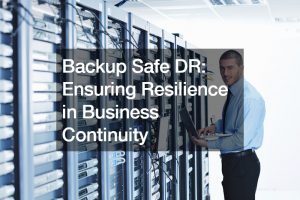Based on estimates, the coronavirus pandemic may not disappear for the next few weeks or months. Countries may still need to impose social distancing. It means they may require most businesses to allow employees to work from home.
But as recent reports showed, it’s not as easy as people thought. For one, there’s an issue of online security, such as Zoom bombings. How can a workplace manage work from home without exposing themselves to cyber threats?
It All Starts with the Cloud
Gone are the days when workers had to bring along floppy disks to store and move files from offices and homes. Even the demand for flash drives is decreasing. One of the reasons is the popularity of a fileserver cloud.
In Internet terms, a cloud is a place where everything online resides. These include documents and media files, such as videos or images. Platforms or apps can also be there.
It’s only IT infrastructure that gives it some semblance of organization. Take, for example, Google Drive. This one works similarly as a desktop that users can share and store files, as well as collaborate with their teammates.
Access to the cloud is essential in any work-from-home setup as it serves as an extension of the office. It’s where employees can use tools to communicate, create and share documents, and read reports, to name a few.
The problem with the cloud is it can also be vulnerable. An employee may end up uploading an attachment with a virus. If someone downloads it, then they infect their system. A malware, meanwhile, can penetrate any weak defense. It can then start stealing information or even copying sensitive or confidential files.
Since the cloud is the center for a work-from-home arrangement, businesses can start its online security plan with it. It has to be impenetrable and formidable. They may have to invest in a fileserver cloud system that offers the following benefits:
- Real-time syncing of files (any changes on the data on the desktop will also reflect on documents found on the cloud)
- Data recovery
- Security compliance
Pair It with Training and Accountability

Although cyberattacks are getting typical, many businesses don’t know that a good percentage of these threats is an inside job. In a 2016 IBM report, about 60% of these incidents involved insiders. An overwhelming 75% of these were malicious or intentional, while the rest were accidental.
It’s, therefore, not enough to have a good cloud platform. Companies may need to complement it with both accountability and training. They can achieve these by:
- Providing access according to the need or level of security of employees. For example, supervisors may have fuller access than team members.
- Training workers on the different cybersecurity threats and prevention tips
- Updating platforms or apps used as they carry patches to resolve bugs
- Creating sound but stern policies on accessing and using systems and files, especially if they are sensitive
- Tapping the IT team to help monitor any intrusions or suspicious access
- Promoting the mindset of safety even in the virtual workplace
The coronavirus pandemic is changing the workplace as more people have to hunker down and work from home. However, it should not alter or reduce the need for cybersecurity. In fact, companies have to strengthen it in two ways: choosing the right cloud system and reducing risks of an inside job.






